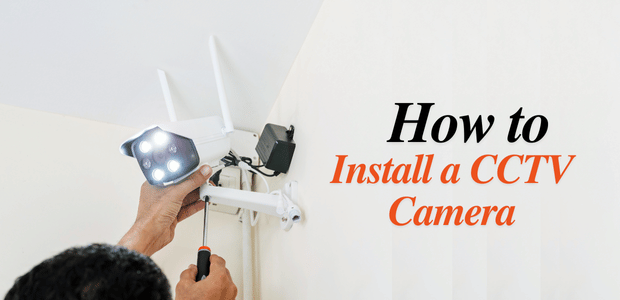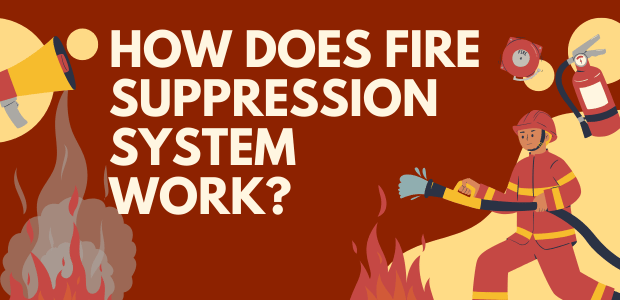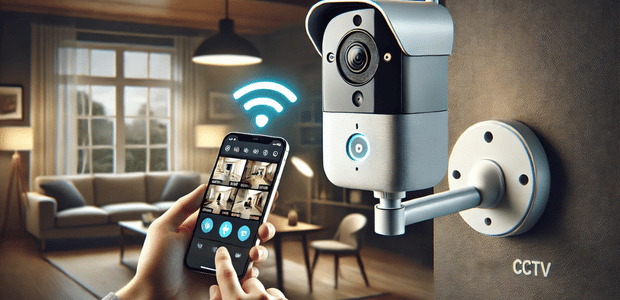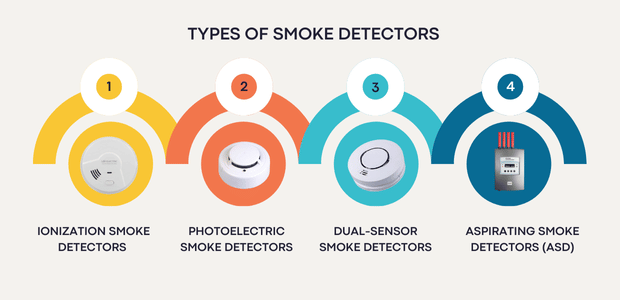How to Install a CCTV Camera | Interface Digital Solutions

- March 20, 2025
- Interface Digital
Installing CCTV security cameras is the single most efficient way to boost property security. However, CCTV installation might be scary. Knowing which CCTV security camera system is best for your needs is one issue; managing the installation procedure is another. CCTV cameras offer numerous benefits like crime deterrence, real-time monitoring, evidence collection, and increased workplace safety. In this guide, we will walk you through how to install a CCTV camera step by step, from choosing the right location to configuring the system for optimal performance.
Step 1 – Select the Best Camera Location
Ideal Placement for Maximum Coverage
Choosing the right location is pivotal for effective surveillance cameras. Here are the key areas you should cover:- Entry Points (Doors & Windows): Place the best doorbell camera to monitor who comes and goes. Also, installing hidden cameras near windows, can help detect any suspicious movements.
- Crowded Areas: These cameras keep an eye on crowded places like hallways, reception areas, or living rooms.
- Blind Spots & Vulnerable Areas: By knowing where and how to install a CCTV camera, it will be easy for you to identify areas where intruders could hide, like backyards or terraces.
Height and Angle Considerations
- Recommended Mounting Height: Install cameras at least 8-10 feet high to prevent tampering.
- Avoiding Glare & Obstructions: Before installing, consider that there are no bright lights, reflections, or tree branches blocking the view.
Step 2 – Choose the Right CCTV Camera
Types of CCTV Cameras
There are several kinds of CCTV cameras available, including:- Wired vs. Wireless Cameras: Wireless security cameras can be easier to install than traditional security cameras since they require fewer cables. They also come in different sizes like mini wireless cameras.However, surveillance cameras without wifi or wired cameras are more dependable. Especially in companies and workplaces, as they need continuous surveillance.
Also read: Wired vs Wireless CCTV Camera: Best Security Camera to Install
- Indoor vs. Outdoor Cameras: Outdoor security cameras are more prone to theft. It is because of their robust construction and heavy barriers. Solar powered CCTV camera is the best camera for outdoors.Unlike outdoor cameras, inside cameras are smaller and lighter. Both employ infrared technology to provide crisp low-light pictures with smooth color changes.
- Dome Cameras: Dome cameras are suitable for both indoor and outdoor applications. They are intended to prevent simple concealing from the camera's lens.They provide extra protection for outside cameras, with some versions including blowers and heaters to combat the weather.
- Bullet Cameras: Bullet cameras are tiny, cylindrical security cameras with a fixed lens and a restricted field of vision. They may be put on walls or ceilings and adjusted to face certain directions.They are tough, can resist extreme weather, and can be linked to digital or network video recorders for remote monitoring.
- Pan-tilt-zoom camera (PTZ) Cameras: A PTZ Camera is a robotic device that can move horizontally, vertically, and zoom.They are typically stationed at guard posts and have a 180 or 360-degree view of large open areas. They can also track motion-activated activities or stick to a planned schedule set by a remote camera controller.
Factors to Consider Before Buying
While choosing the best security cameras, consider the basic factors mentioned below:- Resolution & Night Vision: Select 1080p or higher resolution with infrared (IR) night vision for clear footage.
- Storage Options: There are many storage options available in the market. Choose cloud storage as it is convenient but requires a subscription. But if you prefer good quality recordings, DVR/NVR or SD cards are the right choice.
- Motion Detection & AI Features: Smart cameras have in-built AI features like sending alerts or distinguishing between humans and objects.
Step 3 – Set Up the Wiring and Power Supply
Installing Wired CCTV Cameras
The first thing is to drill holes to route the cables from the camera to the DVR/NVR. Then, secure the cables by using cable clips or conduits. Lastly, connect to a power source and the recording device.Setting Up Wireless CCTV Cameras
If you are installing a Wifi CCTV camera, connect it to Wifi using the mobile app. You should install a camera near the router or Wifi extenders. But to do so, a good wifi connection is needed.Step 4 – Mount the CCTV Camera
- Tools Required: Use basic tools like a drilling machine, screwdriver, mounting brackets, and screws.
- Securing the Camera Bracket: Attach the camera firmly, so that it can be protected from threats like thefts, or extreme weather.
- Adjusting the Camera Angle: Tilt and rotate the camera to cover the selected area without obstacles.
Step 5 – Connect the Camera to a Recording Device
Use Ethernet connections to link each camera to the DVR or NVR in wired setups. WiFi networks must be linked to wireless cameras. For certain combinations, follow the manufacturer's guidelines.Connecting to a Monitor or Mobile App
Use an HDMI or VGA cable to link the DVR or NVR to a TV or watch the recorded footage. With this setup, you can also watch live streams. For real-time viewing in smartphones, set up remote access through the mobile app of the brand.Step 6 – Test and Optimize Your CCTV System
Make sure all of the cameras are powered on and plugged in. Test the system when everything is connected. Make sure the CCTV camera is correctly capturing and displaying footage. If needed, change the camera's angles.FAQs
Q1. What is the cost of installing CCTV Camera?The cost depends on the type of camera, storage options, and installation fees. A basic CCTV setup can cost Rs.950 to Rs. 4,500 Q2. Are CCTV cameras easy to install?Yes! Most cameras can be installed easily. Primarily, Dome and Bullet cameras are easy to install. Q3. Can I install a CCTV camera myself?Absolutely! With the right tools and guidance, you can install the best security cameras for homes/workplaces/public areas. Q4. What is the best height to install a CCTV camera?The ideal height is 8-10 feet. It is good enough to prevent tampering with security cameras.Conclusion
Now that you know how to install a CCTV camera, securing your home or business has never been easier. By choosing the right surveillance cameras, placing them strategically, and configuring the system properly, you can enjoy 24/7 surveillance and peace of mind. Conduct regular maintenance to keep your system in good shape. Also, update software to stay protected from cyber threats.Also read: Tips to Secure your Office with the Best CCTV Camera Installation








